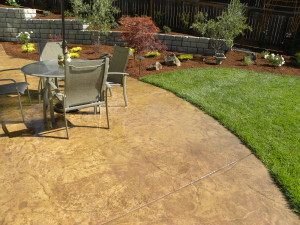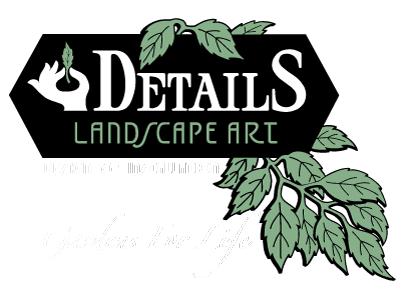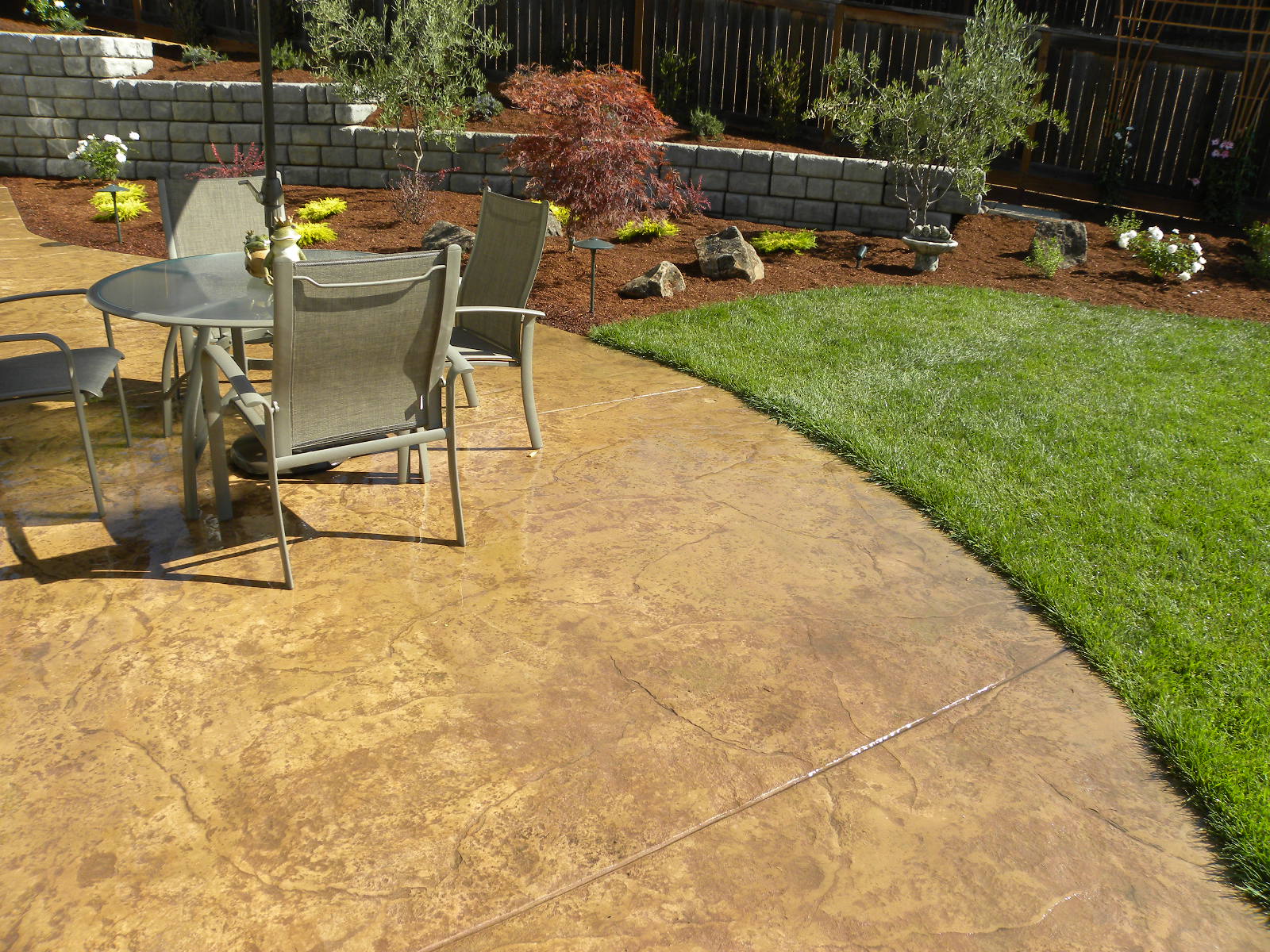One of Sonoma County’s premier landscape contractors, Details Landscape Art, offers a variety of hardscape products. One of the most popular in recent years has been stamped concrete. At about half the cost of flagstone, it is an affordable, yet beautiful alternative.
Flagstone, brick or tile is a two-step process, which requires the pouring a concrete base, letting it harden (at least overnight), and then coming back and mortaring the stone brick or tile on the newly poured base. Stamped concrete, however, is poured and finished the same day.
We generally add two colors, and sometimes three, to the poured concrete. There are dozens of colors available, and hundreds of color combinations. There are many stamps or mats, in a variety of patterns. The photo below shows an English cobble stamp in a two-tone gray.

There are 12 inch, 16 inch, and 24 inch squares, a random stone pattern, brick, wood grain imitation, European fan and others. Each pattern also includes texturing or veining in-between the pattern lines. These nooks and crannies give the concrete a natural stone look. In recent years, we have noticed the increase in popularity of texture mats, which have NO pattern lines, and just show the veining. See photo below.

The process begins as any other concrete pour: excavation to a depth of about six inches, setting the forms, adding about 2-3 inches of Class II road base, and a grid of rebar horizontally throughout. The concrete is then poured, screeded and floated flat to the level of the forms. At this point, the first color is added, and troweled into the surface. Expansion joints are cut, edges rounded, and then the second color is troweled in-maybe less of the second color. The amount of the second or even a third color depends on the look we are trying to achieve…this is not an exact science, but rather an artsy kind of process.
Edges are rounded over, expansion joints are cut, and then when the concrete sets up to a certain hardness, we stamp it. The mats are placed on the still semi-soft concrete and stamped firmly with a tamper.
A water-based sealer, which brings out the richness of the colors, may be applied after thirty days. A process called efflorescence occurs in newly poured concrete, in which a white powdery substance which rises to the surface. It is caused by vapor migrating through the slab bringing soluble salts to the top. So we wait thirty days to ensure that the efflorescence is done. We then clean the white substance with a chemical called ‘Vanatrol’, and scrub it with a brush if necessary before applying the sealer. Although the sealer gives the concrete a beautiful ‘wet look’, which brings out the richness of the colors, a word of caution. The sealer can cause the surface to be slippery, especially with winter rains or around swimming pools. There is also available a semi-sheen sealer, which is less slippery, but, then again, less shiny.
Stamped concrete is a beautiful product and a good value. Details Landscape Art has dozens of sizes, shapes, stamp patterns and colors available for your viewing pleasure.

